The Weekender: 48 Hours in Beirut
The city that survived and roars once more
This post may contain affiliate links. Learn more
Prepare to take ‘living for the moment’ to the next level, Lebanese style.
For all the superficial glitz, glamour and grandeur of the city’s hotels, clubs and restaurants, Beirut has an unshakeable spirit– even more impressive when you consider its turbulent past. The civil war that began in 1975 effaced much of Beirut’s public beauty with bullets, bombs, fire and fury. Less than twenty years since it ended, some buildings still bear their battle wounds.
Explore further to discover stunning interiors decorated with an attention to detail that reflect the integrity of their creators. Kamal Mouzawek, founder of Souk El Tayeb, Lebanon’s first farmer’s market, is right when he says that they nurture the soul. Kindness and generosity have been among Beirut’s saving graces, sustaining the community during repeated political upheaval.
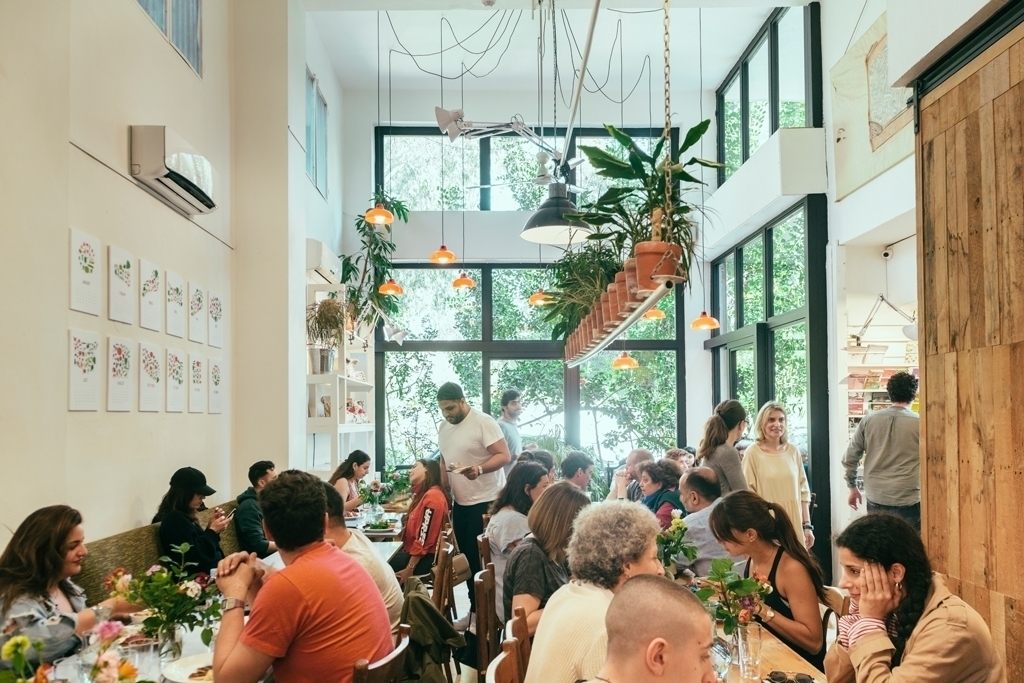
Kamal Mouzawak wanted Tawlet’s interiors to nurture its guests as much as its food © Tanya Traboulsi
Once demarcated by the ‘green line’, a no man’s land that evolved during the war, the majority of Muslims still live in the West of the city, alongside a Christian minority, and vice versa in the East. Now though, despite this sketchy separation, both religions co-exist peacefully, with churches and mosques sitting on opposite corners of the same streets, creating many miniature yet characterful neighbourhoods.

Breakfasting at The Phoenicia
In fact, Beirut takes pride in being inclusive. Championing female home cooks from all over the country, Tawlet is a social development initiative that celebrates the diversity of Lebanese culture and unifies its people through the simple act of sharing food (and then eating it). Similarly, MusicHall is a nightclub with an international outlook, showcasing acts from all over the world. If you only spend one night in this sprawling Middle Eastern metropolis, go here to see the city in its element. Look past the ruins and the rubble (from both ancient and modern times) and explore a fascinating country that has risen, more than once, from the ashes. Feast, party and experience how it feels to live life with your glass half full.
Where to stay in Beirut
To do a weekend in Beirut justice, stay at The Phoenicia Hotel. With a history that speaks far louder than words, it is the doyen of luxury hospitality. Officially opening in 1961, it became a battleground between 1975-6 and was left a burnt-out shell of the socialite magnet it had once been. It reopened in 2000 – restored to more than its former glory with an additional tower – before it once again had to close for repairs after the Prime Minister Rafik Hariri was assassinated in the street right in front of its grand doors.
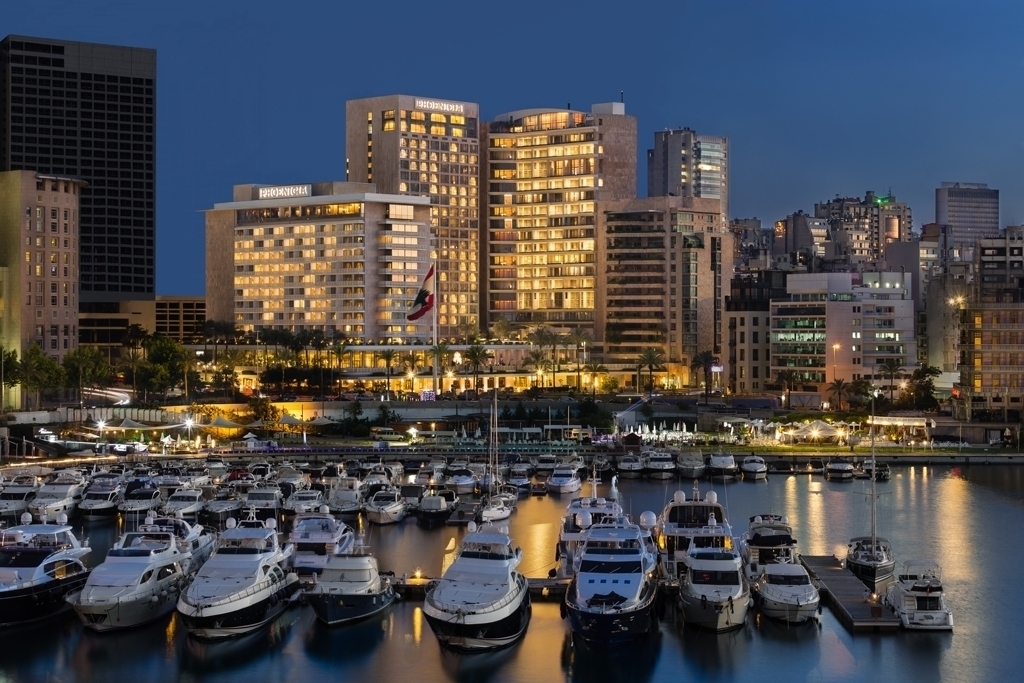
The Phoenicia Hotel overlooks the marina and the Mediterranean Sea
Now, with a Roman and a Phoenician-themed tower brimming with hundreds of luxurious and spacious suites, the hotel attracts affluent guests from all over the Middle East and Europe, bringing the hotel full circle and returning it to the pinnacle of high society– where it belongs.
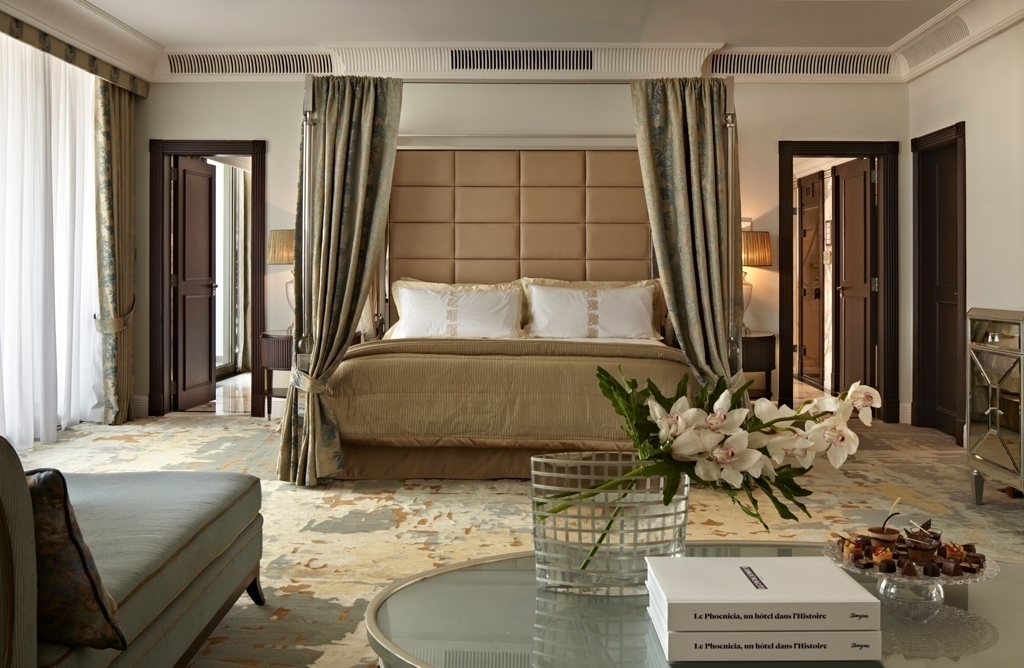
The Phoenicia Hotel, Beirut’s Presidential Suite
The Cascade lounge is the hotel’s beating heart; ideal for a spot of people-watching, a couple of drinks and a handful of delicious salted nuts (better than British ones – trust us). Nowadays, The Phoenicia’s also a bastion of Beirut’s art scene, hosting resident artists year-round and an annual photography competition and exhibition.
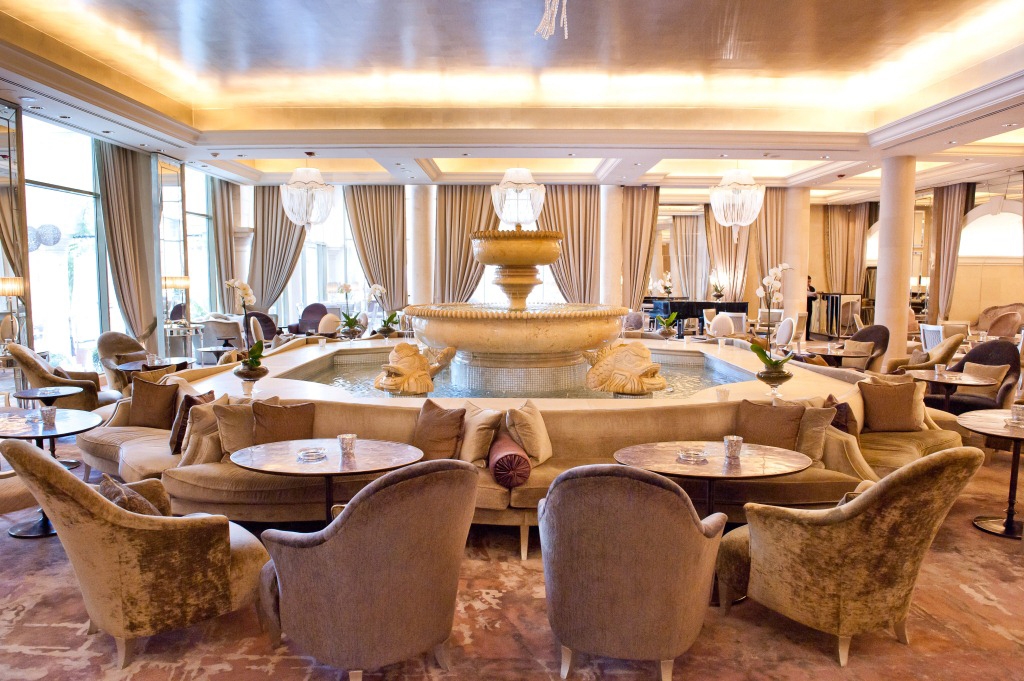
Cascade lounge
The gym, Amethyste pool, sauna, steam room and authentic Oriental spa treatments mean you can opt to spend your day a quieter way. If you seek a cosier, more intimate stay, book Le Vendôme, The Phoenicia’s little sister boutique hotel just down the road. You will still enjoy the same convenient location – both are within walking distance of the Corniche El Manara, where you can join the locals on their coastal morning run, and have views over the marina – but it has just 73 rooms rather than 446.
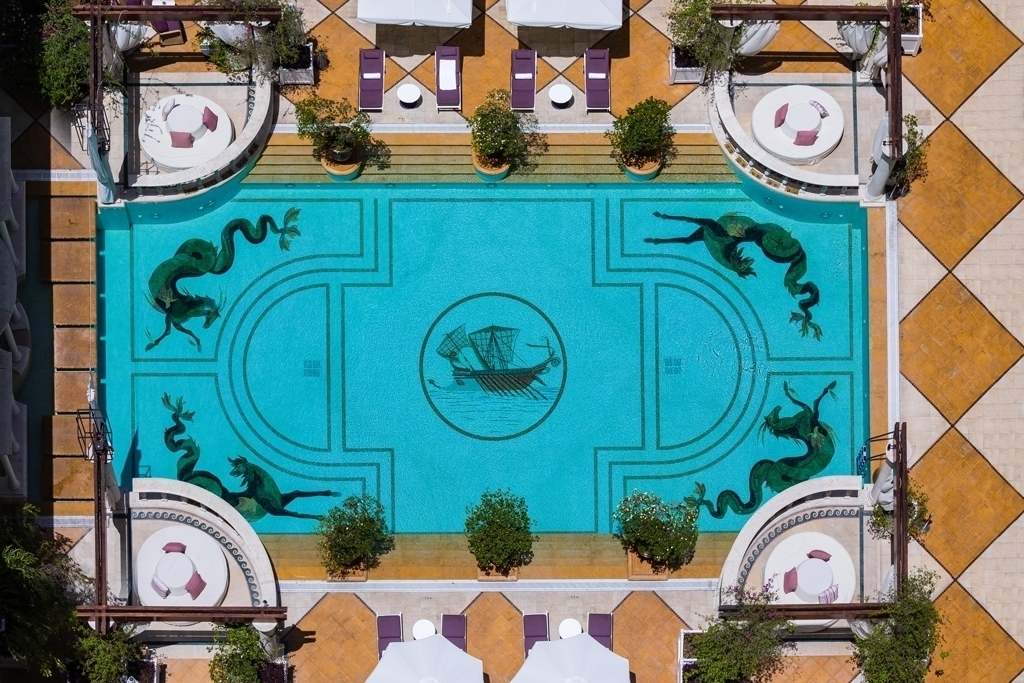
The iconic Amethyste pool
What to eat in Beirut
You need not look further than your doorstep if you’re staying at The Phoenicia. Their largest restaurant, Mosaic, is so extensive it’s basically an indoor food market. Offering cuisines from all over the world, with ample emphasis on traditional Lebanese delicacies, there are surprises at every turn. Live cooking stations bring dishes to life – watch saj bread plumped onto hot skillets by cushioned mitts, try the oozing Lebanese version of cheesecake, kunafa, or DIY your own foul, a stewed fava bean vegan breakfast that can be pimped up with various spices and salsas. And that’s just breakfast! The lunch buffet is just as lavish, full of the Lebanese light bites that will quickly become favourites (kebbe, moutabal, moussa’a, stuffed vine leaves, labneh, shanklish, raheb salad, I could go on), plus soups, salads, pastas, an array of curries and a live chawarma station making classy kebabs.
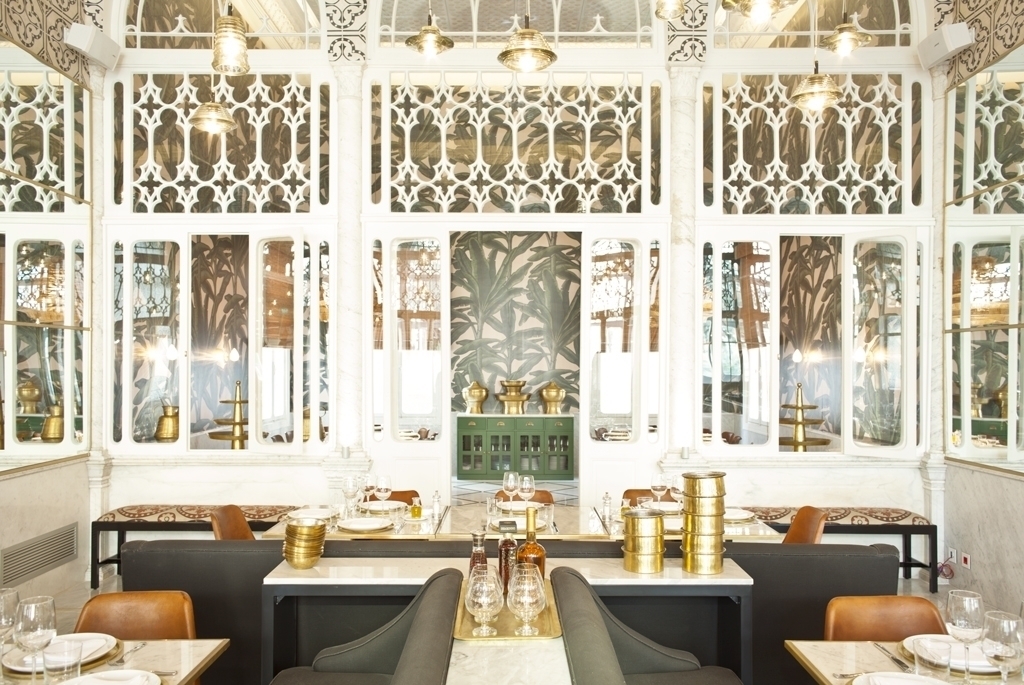
Liza, Beyrouth restaurant © Marco Pinarelli
For dinner, Rossini Osteria e Caffe, the hotel’s new on-site restaurant, serves Italian food rustled up by Italian chefs, and it’s well worth a night off the hummus and fattouch to try it. Further afield, Liza Beyrouth in Ashrafieh will dish out a Lebanese feast fit for a king from within its beautiful Ottoman-style townhouse. Pace yourself. They begin with two rounds of mezza, then bring out the bbq-ed meats platter and finally the desserts, which follow hot on its chargrilled heels.
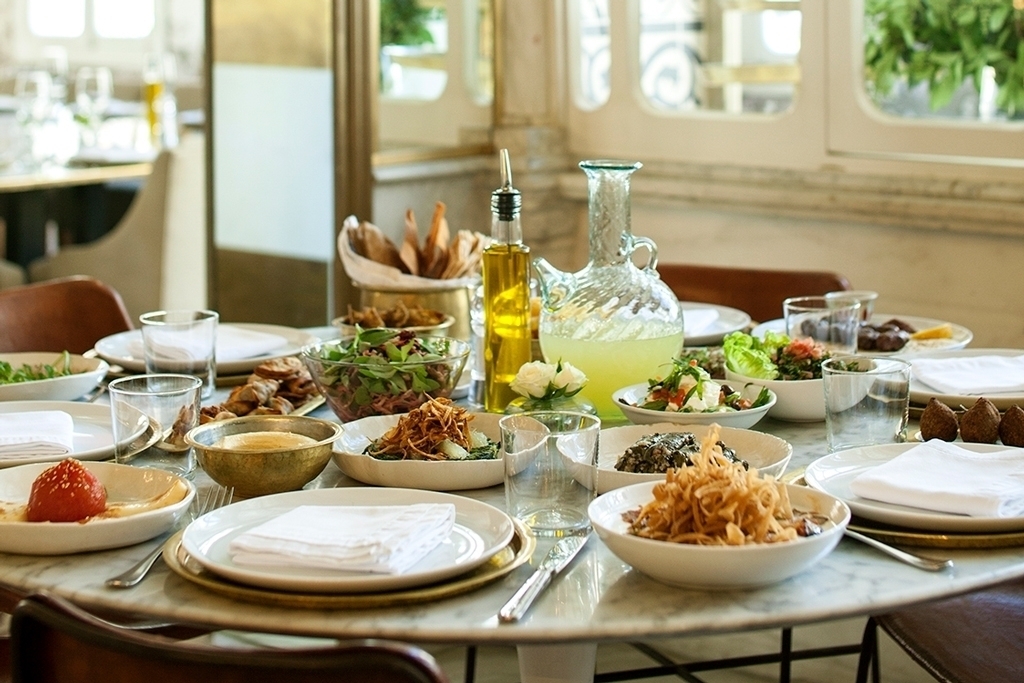
These are just the starters…
Different regions with distinct terrains and climates (of which there are many in Lebanon – in summer some of the Lebanese will be skiing!) create each classic dish depending on the foods that are in season, and Tawlet is a must-visit to try each locale’s signature twist. Every day a different woman from a different area, such as Tripoli or Ajaltoun, cooks the entire menu from scratch. And of course it’s a buffet.
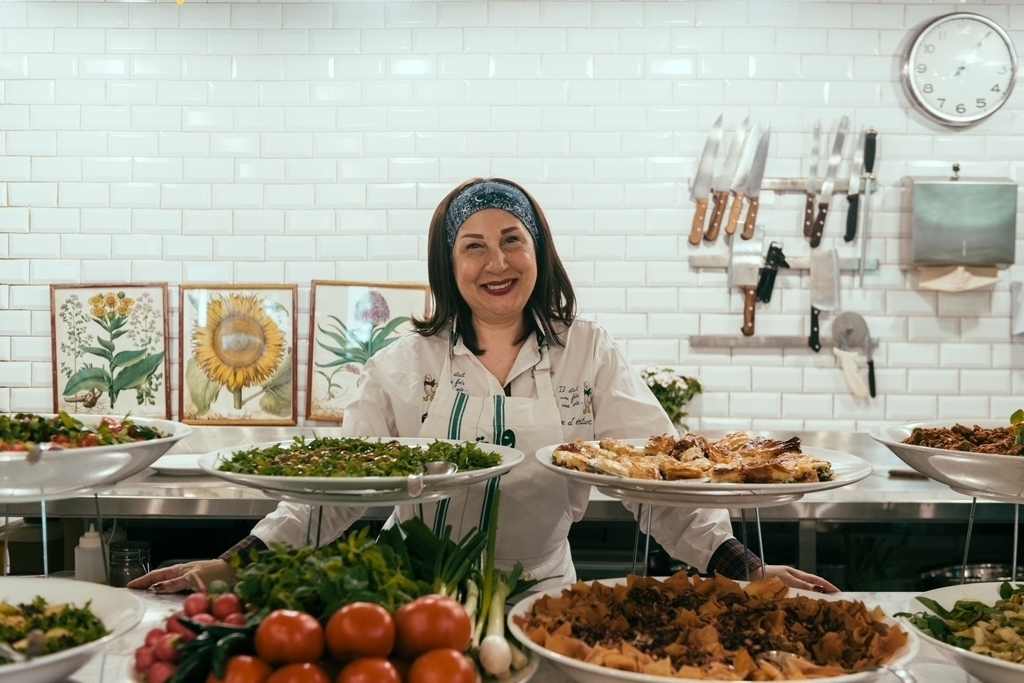
Cooks from all over the country take turns to feed the food of their homes to guests at Tawlet © Tanya Traboulsi
For warm falafels and street food, make a beeline for the farmer’s market, Souk el Tayeb, in downtown Beirut, open on Saturdays from 9am until 2pm.

New, meet old
What to see in Beirut
A short walking tour of Beirut covers thousands of years of history. Start at the Egg. It’s not much to look at but bizarrely-shaped (as a massive egg, of course) and abandoned for 35 years, its previous life as a movie theatre makes it an unignorable symbol of Beirut’s lost years.
Next on the whistle-stop tour is the gigantic and chandelier-adorned Mohammad Al Amin Mosque, built in the lap of the city’s Roman bath ruins, which most likely date from 551 AD when the Berytus earthquake hit, killing approximately 30,000 people. Though they have been conserved since they were discovered in 1968, there are neither signposts, pomp nor ceremony, so it’s a complete surprise when you stumble upon them. Beirut’s downtown area is home to the Lebanese parliament and the Rolex clock tower in Place de L’etoile. Admire the Saint George Greek Orthodox Cathedral while you’re there.
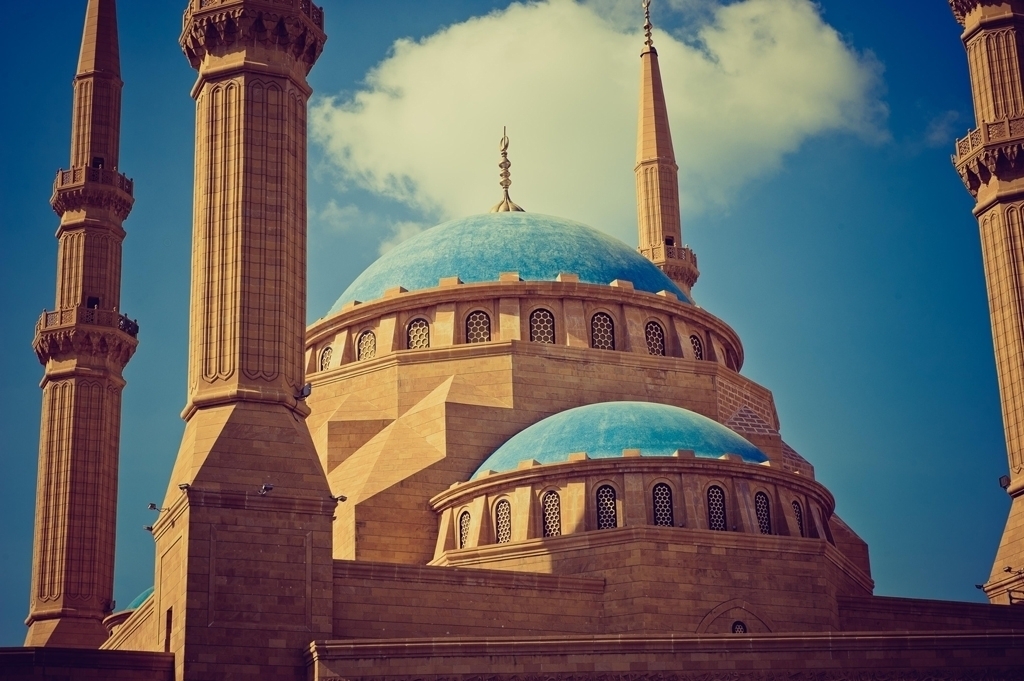
Mohammad Al Amin Mosque
If history is your bag, then the National Museum will fill any gaps BC and early AD. It passes the baton to the modern history museum, Beit Beirut. For an insight into the lives of the city’s elite, visit The Sursock. Not only is it an extensive contemporary art collection but previously the home of a local aristocratic family. Some rooms have been preserved; windows into the wealthy whims of the family up until Nicolas Sursock’s death in 1952.

Roman ruins in Beirut
What to buy in Beirut
For small and mainly edible souvenirs, the Souk el Tayeb will sort you out. Za’atar, honey, preserved fruits and vegetables of all kinds and sweet treats made from carob molasses are piled upon stalls that wind around the streets. Have a coffee (be careful – it’s been brewed for 3 days and spiked with cardamom hence they only pour out thimble-fulls), a browse and a chat. The farmers and craftspeople who are selling their wares are more than happy to offer tasters or explain more. The personal touch is persuasive so remember to take out lots of Lebanese lira or dollars – they accept both.
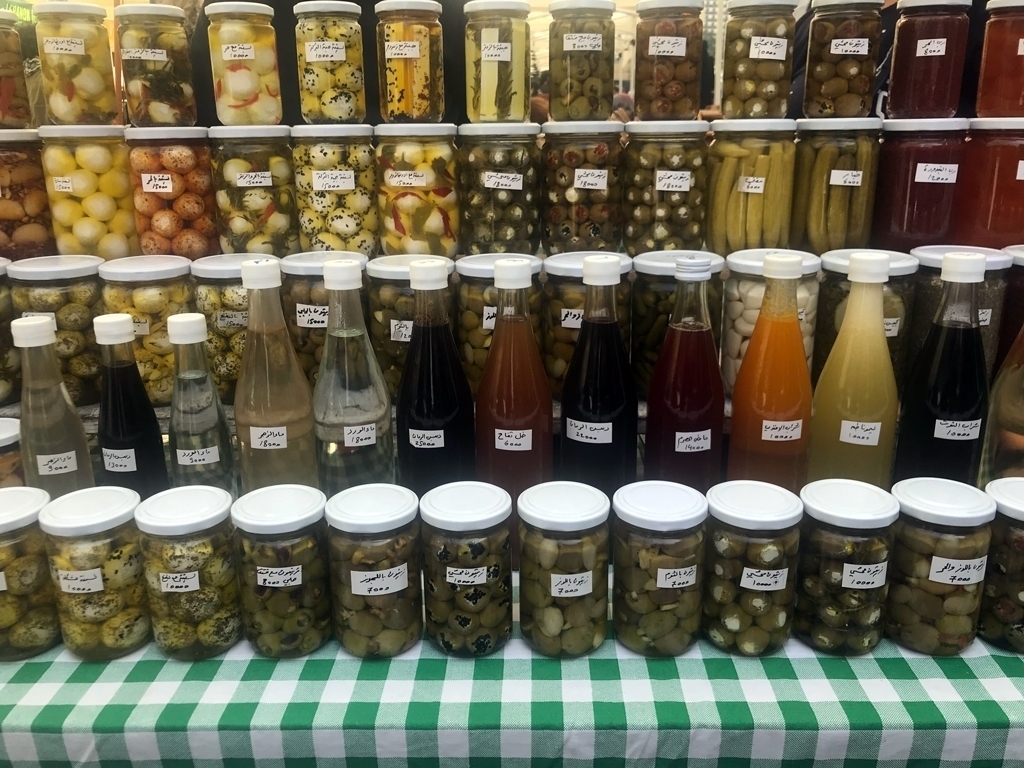
It’s lucky dip at the pickle stall
Don’t miss the opportunity to try wine from one of the oldest production sites in the world. Ixsir, the Arabic word for ‘elixir’, has six separate vineyards located at different altitudes (including one at 1800m – the highest vines in the northern hemisphere), the closest of which is Basbina in Batroun – 60km and about an hour’s drive from Beirut. With a terrace shaded by Mulberry trees, eating at Ixsir after a wine tasting and tour is a must. Plus, Nicolas Audi is a bit of a celebrity name in Lebanon and he runs the restaurant there. Buy a couple of bottles of their Grand Reserve or vintage EL blends to inspire memories of this special place from home.
What to do in Beirut
Go on a bender. Beirut transforms at night. When the sun goes down, the people come out to play… and stay out until the early hours. The difference is the Lebanese can actually consume alcohol in a civilised manner – more than can be said for some Londoners.
The Mar Mikhail district is the place to go to find a buzz and many bars to crawl. Start at Central Station to enjoy an artisan cocktail experience. The Puzzle, modelled on deconstructed fattouch, is a winner (the menu changes every six months so you may be in store for something even better). Coming as a pair, one drink represents the salad and the other, the salsa. The building itself has a story too (there’s no escaping them in this city!) As per the name, it was originally a metro station, which became defunct when the underground system was destroyed during the war, and now continues its life filled with as many people, just having more fun.
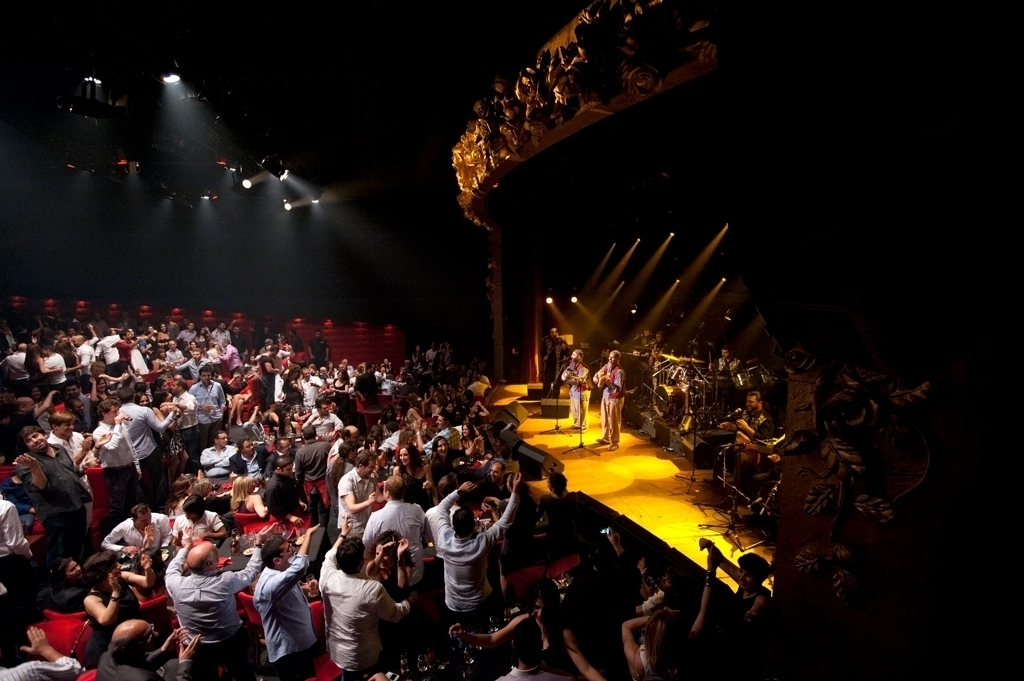
Give it up for MusicHall
Finally, no trip to Beirut is complete without an all-singing, all-dancing night at the magical MusicHall Starco. It really is an institution in its own right, describing itself as ‘not just a theatre venue and much more than a club’. Think Britain’s Got Talent meets The Royal Opera House – absurd, maybe, but incredible, yes. The likes of Cuban and Egyptian performers begin the show, but stay until the end for surprise tribute acts and a taste of traditional Lebanese dancing. The crowd went wild for Tina Turner.
How to get to Beirut
Direct flights from Heathrow are between four and five hours long. Though British Airlines fly over daily, you may find plumping for MEA is the better option, with more sociable flight times. The Rafic Hariri airport in Beirut is just a 15-minute transfer to The Phoenicia. Book a double room here from £230 per night, including free reign of that glorious breakfast buffet, taxes and fees. At Le Vendôme, Beirut prices for a double room start from £300 plus VAT.
